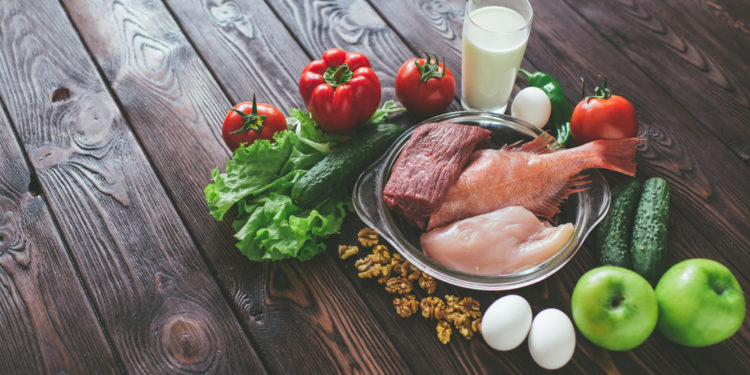How To Get More Protein Without Fat

Proteins are building blocks of the body, and a vital macronutrient for maintaining and repairing tissues, cells and organs. Despite being present in the foods we eat every day, many of us still fall short of consuming the required amount. By understanding the various types and qualities available in the market, one can increase protein without being concerned about excess fat.
Choose the right type and amount of protein
When consumed, the body breaks protein into 20 amino acids necessary for growth and energy. Most animal sources of protein, be it eggs, meat, poultry, fish, or dairy, contain all the amino acids the body needs. Plant-based protein sources such as vegetables, grains, beans and nuts often lack one or more of the essential amino acids. However, that doesn't mean that consumption of animal protein is a must. Increase protein by including a variety of plant-based sources, as it supplies the body with essential amino acids.
Adults should eat at least 0.8 g of protein per kilogram of body weight per day. Whereas, nursing women should aim to get about 20 g more high-quality protein a day than they did before pregnancy to support lactation, and older adults should target 1 to 1.5 g protein for each kilogram of weight.Increase protein intake to prevent the risk of osteoporosis, obesity, type 2 diabetes, and stroke!
High-quality vs. low-quality protein
Checking the quality of protein before consuming it is crucial. For instance, both red meat and full-fat dairy products are rich in protein but contain saturated fat, which is harmful to the body.
A method to determine the quality of protein is by checking industrially raised meat with organic grass-fed meat; the former is of high-quality. One should always opt for high-quality sources when attempting to increase protein intake.
Here's how you can increase protein intake while keeping the fat consumption low:
- Pulses, beans, dals and lentils are low-fat sources of protein and other nutrients such as dietary fibre and potassium. They do not provide all the amino acids, or protein components, which the body requires. However, one can pair pulses with grains/cereals to fuel the body with the required amino acids. Try khichdi, dal and brown rice, hummus with whole-wheat pita, lentil soup with barley, or rajma with brown rice.
- Chicken and turkey breast, shellfish and most kinds of fish (such as sole, cod, mahi, bassa) are excellent sources of protein. Removing the skin from these sources lowers the fat content considerably.
- Opt for seafood thrice a week as it is high in protein and low in saturated fat. Salmon, trout, sardines, anchovies, black cod and herring are also high in omega-3 fatty acids.
- Meat from grass-fed animals is lower in fat when compared with industrially raised meat. Grill, poach, broil or steam in order to limit fat.
- Processed meats are a good source of protein, but tend to be loaded with salt. This can lead to high blood pressure and other health problems. Thus, should be avoided.
- Full-fat dairy products contain unhealthy saturated fat, low-fat milk, paneer and yoghurt are good sources of protein.
- Beware of added sugar in low-fat yoghurts and flavoured milk. Skip processed cheese; it often contains non-dairy ingredients.
- Snack on nuts and seeds instead of chips, replace a baked dessert with Greek yoghurt, or swap slices of pizza for a grilled chicken breast and a side of beans. Always opt for unsalted nuts and seeds to reduce your sodium intake.
- Choosing whole food complexes such as beans, nuts and seeds provide fibre along with protein and good fat. This also ensures that the lipid profile does not get affected.
- Tofu can help you meet your protein needs and doesn't contain much fat. It's bland and tends to take on the taste of other ingredients used in a recipe, which makes it a great addition to any meal. Try smoothies and bhurjis .
- Soy is also an excellent alternative to red meat, high in protein and low in fat. Available as chunks, granules or powder, it makes for a good addition to vegetarian menus.
- Adding vegetables such as spinach, peas and mushrooms increases the protein content. They are also devoid of fat and rich in good fibre, making them a super addition to your meals.
- Increase protein in your diet by replacing processed carbs with high-quality protein. Avoid cakes, pastries, cookies, chips and pizza, and replace them with white meat, fish, beans, nuts, seeds, peas, dairy, and tofu products. This will help you maintain a healthy weight, and reduce your risk for heart disease and stroke.
Looking for tips to increase protein in your diet? Our coaches can customize a diet and workout plan to suit your needs!
[symple_button url="https://healthifyme.onelink.me/2285251819?pid=Blog_Post&c=Sign_Up&af_dp=hmein%3A%2F%2Factivity%2FPlansv2Activity&af_web_dp=http%3A%2F%2Fhealthifyme.com%2Fhome&af_force_dp=tarue" color="red" size="medium" border_radius="3px" target="self" rel="" icon_left="" icon_right=""]Click here to Sign Up [/symple_button]
How To Get More Protein Without Fat
Source: https://www.healthifyme.com/blog/increase-protein-intake-without-fat/
Posted by: fraziertherrudy.blogspot.com

0 Response to "How To Get More Protein Without Fat"
Post a Comment